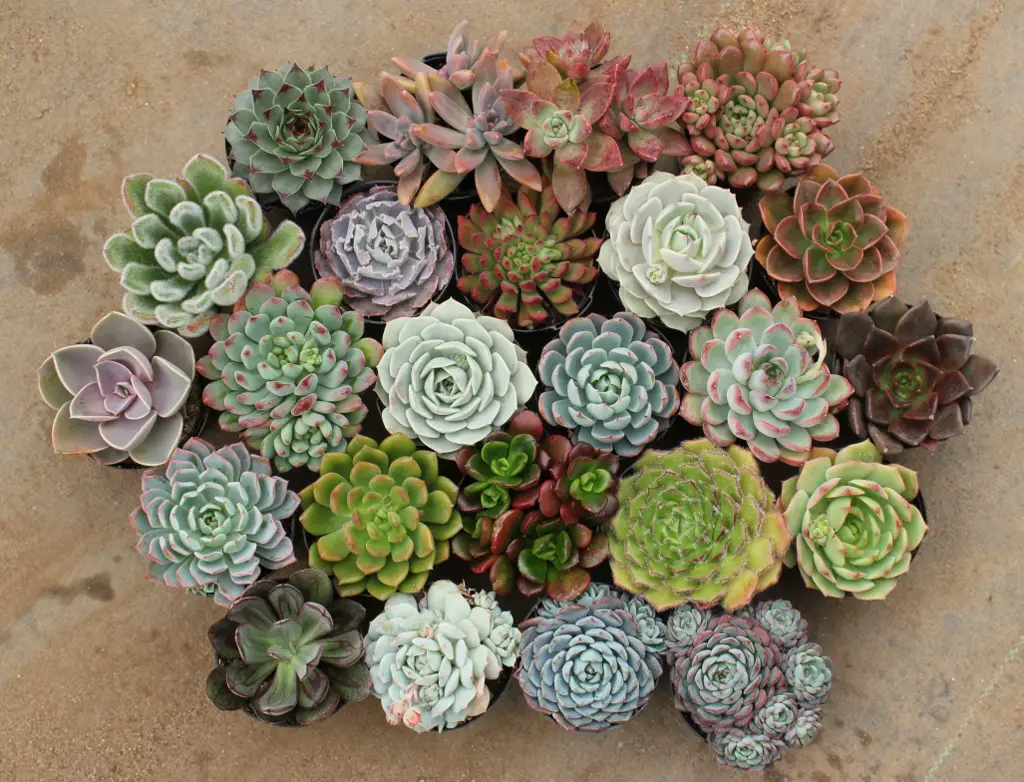In dorm rooms and new apartments, drab white walls and bare surfaces make homes away from home feel a bit cold and impersonal. Tapestries, movie posters and the unusual trinkets help to counter that “basic” feel, but sometimes it’s not enough.
Sometimes you just need a little bit of greenery.
Becoming a more staple element of dorm rooms and the apartments of first-time renters, succulents are that easy-to-care-for plant that adds both style and comfort to a room. They also bring about a calming ambience, making them the perfect accessory for college students that stress over assignments, internships and job hunts. It’s also important to mention that they look great on Instagram.
But while all these reasons draw young adults to succulents, students are also known to be the ones who most frequently kill the “unkillable.” So before you delve into brightening up your room with new plant friends, it’s important to take a few minutes to learn the proper way to care for them so you don’t end up with barren pots and a sad heart.
How to Care for Your New Babies
Succulents are known for being that plant you can never kill. They’ve been called hardy, indestructible and perfect for people who want something to care for but can hardly care for themselves.
And while succulents are tough lil’ buggers known for surviving harsh conditions, they do require a bit more attention than most people believe. They can’t just be left on the windowsill and expected to survive on their own. Rather, they require weekly attention and a bit of love to thrive.
Lighting: Remember that episode of “Spongebob” where he pretends to be a plant? He lays on the ground and chants, “Photosynthesis, photosynthesis,” with his yellow arms outstretched. Even though “Spongebob” isn’t always factual, the photosynthesis system is. During the process, plants absorb sunlight and use it to produce energy. It’s a critical mechanism that plants require to survive, and succulents are no exception to the rule. Most succulents actually like a lot of sunshine. They’ll be happiest in a window that receives at least a half a day of sunlight, if not more.

Watering: A common misconception associated with succulents is that they don’t need to be watered. This isn’t true. It helps to think of them as camels. Camels can survive without water for extended periods of time, but that doesn’t mean you should withhold water from your camel. If you have water, give some to your camel and she will be much happier. But just know that if you have to take off for a few days or forget to water her one morning, she should be okay. She might not be happy with you when you return, but she should be just fine.
The same goes for succulents. They have adapted to sustain themselves with little moisture during dry periods due to their need to survive in arid climates such as deserts, grasslands or mountainous regions, but they do like a drink every once in a while. Weekly waterings are probably your best bet, but check with your florist or plant provider about your particular succulent. A good rule of thumb is to check your plant’s soil. Typically you want to water the plant thoroughly, let the soil dry out then water again.
But whatever you do, don’t mist your plant with a spray bottle. Misting imitates humidity, a type of environment that most succulents do poorly in.
Soil: Because succulents don’t like to have wet feet, you want to make sure you have good draining soil. Rocks, sand or gravel mixed in with the soil will help with the draining as will a slight layer of gravel or pebbles on top of the soil, surrounding the plant. It will also provide some security for your succulent as well as a stylish look.
Temperature: Depending on the plant’s type, most succulents can survive cold temperatures. In fact, you should be more wary if your plant is going to spend a lot of time in an excessively warm climate because they can take damage if they get too hot. But unless you’re planning on keeping your plants outdoors, room temperature should keep them happy.
Propagate: A little known fact about succulents is that you can grow a new plant from the clippings or broken leaves of your original plant. It’s called propagating. If your plant’s growth is a bit excessive and you want to trim it down or if a stem breaks loose, those clippings can then be set aside to dry out. It may take a few days or a week, but once you feel the leaf is dry enough, you can place it on some soil and watch roots pop out. Water the new “baby” succulent sparingly during this process. You don’t want these little guys to drown.
Dress ‘Em Up
While the plants themselves will add a lot of flair to your room, there’s also innumerable ways to add a little personality to their planters.
Terra cotta pots, the cheap, go-to planters, can be painted a variety of ways. Paint the pot your favorite color, or use tape to lay out intricate designs that you can paint over with an assortment of colors. You can also resort to chalkboard paint which would allow you to write out your plant’s pet name, your favorite words or short phrases.
If you’re crafty with a needle and thread, consider knitting your plant a little cozy that you can swaddle around a dull pot. Or if you stumble upon some cardboard and decorative paper, you can easily make a wrap to position around the original plastic pot most succulents come in.
You also don’t have to use the standard pot as a home for your succulent. You can use a favorite mug, old watering can, Mason jar, seashell or any other object that could function as a “container.” Essentially, just have fun with the plants. Get creative, or keep it simple. Maintain a steady watering schedule. No matter what you do with them, succulents are guaranteed to add some new life to your room.

















